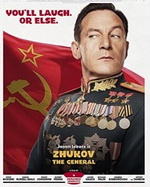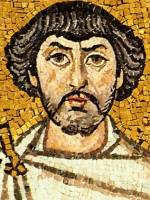offline
- Khaless
- Legendarni građanin

- Pridružio: 08 Sep 2005
- Poruke: 5738
|
Evo šta kažu o Rumunskim snagama u bitci za Staljingrad:
Background
Following the Molotov-Ribbentrop Pact in August 1939, Romania lost almost one third of its territory, without a single shot being fired, as Bessarabia and Northern Bukovina were annexed[1][2] by the Soviet Union on June 28, 1940, after Romania yielded to a Soviet ultimatum.[3][4][5][6] As a result, King Carol II was forced to abdicate in September 1940, and the Pro-Nazi General Ion Antonescu rose to power.
In October, Romania joined the Axis and expressed its availability towards a military campaign against the Soviet Union, in order to recapture the provinces ceded in June. After a highly successful summer campaign in 1941 as part of Army Group South, the Romanian Armed Forces achieved its objectives of regaining the territory between the Prut and Dniestr rivers. Despite this, General Antonescu took the decision of continuing the advance alongside the Wehrmacht, disregarding the Romanian High Command's doubts over the possibility of sustaining a mobile warfare campaign deep inside Soviet territory. In October 1941, the Romanian 3rd army occupied Odessa after a protracted siege which caused more than 80,000 casualties on the Romanian side, and severe destruction and many casualties among the civilian population (the Odessa massacre). Spring and Summer of 1942 saw the 3rd and 4th Romanian Armies in action in the Battle of Crimea and the Battle of the Caucasus. By the Fall of 1942, the two armies were poised to attack Stalingrad.
[edit]
Prelude
German advance on the Eastern Front from 7 May to 18 November 1942
In September 1942, the Romanian Third Army and the Romanian Fourth Army started to take up their positions around Stalingrad together with the first elements of the Romanian Air Corps: on September 16, the 7th Fighter Group, on September 25, the 5th Bomber Group and, on October 4, the 1st Bomber, 8th Fighter, 6 Fighter-Bomber and 3rd Bomber Group arrived with the mission of providing air support for the 3rd Romanian and 6th German Armies.
The Romanian Third Army, commanded by General Petre Dumitrescu, was transferred from the Caucasus and replaced 5 Italian and 2 German divisions, between Blij Perekopa and Bokovkaya with the task of defending a front 138 km long, way beyond its possibilities. To make things worse, the Soviets had two bridgeheads over the Don River at Serafimovich and Kletskaya, which The German High Command ignored despite repeated requests by General Dumitrescu to be allowed to eliminate them. At the start of the Soviet offensive in November 1942, the 3rd Army had a nominal strength of 152,492 Romanian troops and 11,211 German troops, being made up from 1st, 2nd, 4th and 5th Corps in a single echelon (1st Cavalry, 5th, 6th, 7th, 9th, 11th, 13th and 14th Infantry Divisions) from West to East, with 7th Cavalry and 15th Infantry Divisions in reserve. The Long Range Recon (DO-17M) and the 112th Liaison Squadrons (Fleet 10G) were also at its disposal. In November came the German 48th Corps composed of the 22nd German Panzer Division and the 1st Romanian Armored Division, which also was put in reserve. It also had the 2nd, 4th, 5th and 8th Motorized Heavy Artillery Regiments and the 41st Independent Motorized Heavy Artillery Battalion. Opposite the 3rd Army was the Soviet Southwestern Front (1st Guard Army, 5th Tank Army and 21st Army), with a staggering force of 5,888 artillery pieces, 728 tanks and 790 planes.
IAR 80 fighter planes
The Romanian Fourth Army, commanded by General Constantin Constantinescu, having a nominal strength of 75,580 men, occupied a line south of the city, between Straya Otrada and Sarpa. It comprised the 6th and 7th Corps (1st, 2nd, 4th, 18th, 20th Infantry Divisions and the 5th and 8th Cavalry Divisions).The Romanian Air Corps put at its disposal the 15th, 16th, 17th Observation (IAR 39) and the 114th Liaison Squadrons (Fleet 10G) covering a front of 270km long. Thus the 18th Cavalry covered a line of 100 km. The reserve were the 6th Roşiori Regiment, the 27th, 57th Pioneer Battalions and the 57th Recon Group. Also, the Fourth Panzer Army had in the area the 29th Motorized Infantry Division. This army was supposed to check the advance of the Stalingrad Front (51st, 62nd, 63rd and 57th Armies), which possessed 4,931 artillery pieces and 455 tanks.
Most of these formations were in deplorable shape, with at best 73% of necessary manpower, with the 1st Infantry Division going as low as 25% and an almost nonexistent arsenal of heavy antitank guns. Between these two armies was the Sixth German Army, under Generalfeldmarschall Friedrich Paulus.
[edit]
The battle
[edit]
In the North
On 19 November at 0530, in the sector of the 3rd Romanian Army, violent artillery barrages battered the entire front-line. The weather conditions were harsh: blizzard, snowing, -20 degrees Celsius, which made close air support impossible. The Soviets assaulted the positions of the 14th Infantry Division with the 5th Tank Army and the junction between the 13th Infantry Division and the 1st Cavalry Division with the 21st Army, with a total of 338,631 men against 3 weak divisions. The 37mm and 47mm AT guns were useless against Soviet tanks so the Romanian troops had to use grenades, anti-tank mines and Molotov cocktails. In the first hours they managed to delay the advance and destroy some armor, but later they had to retreat or be encircled. The Soviets also attacked west of Sarisa Valley and at Raspopinskaya but were repulsed. In response to the situation developed south of Kletskaya, the 48th Armored Corps was ordered to move towards the Soviet main thrust and shortly afterwards, the 22nd Panzer Division was redirected to northwest, towards Bolsoy and, reaching Petshany it engaged Soviet armor. By evening, the 1st Romanian Armored Division reached Sirkovsky, making preparations to attack Bolsoy the next day. In the first day of the offensive, the Soviet forces succeeded in making two breaches in the defence disposition ot the 3rd Romanian Army: one in the center, 16-18 km wide and 15 km deep and one in the right wing, between the 3rd Romanian Army and the 6th German Army, 10-12 km wide and 35-40 km deep.
Soviet advance at Stalingrad from November 19 to November 28, 1942
On 20 November, the Soviet armored and motorized forces advanced towards Kalach, with the intention of encircling the 6th German Army fighting at Stalingrad. The 22nd Panzer Division, overwhelmed at Petshany by the large number of Soviet tanks, withdrew north to Bol. Donschynka. The 1st Romanian Armored Division, without any available radio contact, tried to advance to Petshany in order to make the junction with the 22nd Panzer Division, but was forced to stop a few kilometers West of Korotovsky by stiff Soviet resistance and numerous counterattacks with the Soviet tanks, flowing between the German 22nd and the Romanian 1st, occupying the Varlamovsky and Peralasovsky villages and making the junction with forces coming from Gromsky, thus encircling the 5th Corps. In the 4th Corps' sector, 40 Soviet tanks attacked the 15th Infantry Division but were repulsed by evening with heavy loses. Meanwhile, the 7th Cavalry Division unsuccessfully tried to block the enemy's advance, the right wing of the division, which had fully received the blow, was retreating south while the left wing was reassigned to the 9th Infantry Division. Also, the 1st Cavalry Division had to retreat towards Stalingrad and was subordinated to the 6th Army. At the end of the day, the defence position of the 3rd Romanian Army had a 70 km wide gap in the centre. In this pocket were encircled the 1st Armored Division, three infantry divisions (5th, 6th and 15th) and remains of other two infantry divisions (13th and 14th). The former commander of the 6th Infantry Division, Major General Mihail Lascăr, took command of the troops from the infantry divisions and formed the "General Lascăr" Group (40,000 men). At this point, the command point of the 3rd Army began moving to Morozovskaya.
On 21 November, the 22nd Panzer Division tried to advance towards Perelasovsky in order to make the junction with the 1st Armored Division and to relieve the "General Lascār" Group, but failed and was stopped the next day between Bol. Donschynka and Perelasovky. The 1st Romanian Armored Division was advancing towards Bol. Donschynka , where it was hoping to find the German Division, but the village was under Soviet control and then headed south and, after grim fighting, crossed the Chir river on the 25th.
On 22 November, the encircled "General Lascār" Group, which had been ordered to resist at any cost, was attacked and transmitted its last message. They had run out of food and each gun had only 40 rounds left and after refusing the Soviet proposal to surrender they were entirely destroyed. Only the 1st Battalion of the 15 Infantry Regiment (6th infantry Division) had succeeded in getting to the river Chir with all its soldiers and equipment commanded by Major Gheorghe Rasconescu. His battalion had managed to prevent the Soviet 8th Cavalry Division from capturing the vital German airfield at Oblivkaya from 26 November to 3 December.
On 23 November, the Soviet troops of the South-Western Front and of the Stalingrad Front met at Kalach-na-Donu, completing the encirclement of the German 6th Army, parts of the 4th Army and 6 other Romanian infantry divisions and one cavalry division.
[edit]
In the South
On 20 November, the 4th Romanian Army's positions were attacked by the Soviet 57th and 51st Armies, with the main blow in the sector of the 20th, 2nd, 18th and 1st Infantry Divisions. The 57th Army attacked towards Sovetsky in the North-East and the 51st Army towards Kotelnikovsky in the south. The front was broken at the junction of the 2nd and 20th Infantry Divisions and at the junction ot the 1st and 18th Infantry Divisions. The Soviets advanced fast into the breaches created by the first wave, pushing the 13th Tank Corps towards Saty, the Soviet 4th Mechanized Corps towards Plodovitoyeand and, later, the 4th Cavalry Corps towards Abganerovo. By evening, the 1st and 2nd Infantry Divisions were virtually destroyed and the 18th Infantry Division was in danger of encirclement. Also, the link with the 20th Infantry Division was interrupted. Despite the stubborn resistance put up by the 91st Infantry Regiment and the 20th Pioneer Battalion, the Soviets broke through Tundutovo and Ivanovka, getting behind the division's position and, within an hour, most of the Romanian soldiers were either dead or captured.
On 21 November, the 57th Army advanced towards Sovietsky (17 km southeast of Kalach) to meet the forces of the South Western Front and encircled the German forces at Stalingrad, while the 51st Army advanced towards Kotelnikovo, along the Kotelnikovo-Stalingrad railroad. The 6th Corps tried to resist while the "Korne" Detachment(3rd, 4th Cavalry Regiments, 2nd Artillery Battalion and the 7th Heavy Artillery Regiment), backed by German armored units, triggered a counterattack towards Abganerovo, with the 29th German Motorized Infantry Division attacking from the northwest. The action failed due to lack of efficient anti-tank weapons.
On 22 November, the Soviets took hold of Mal. Derbety and Tundutovo and the "Korne" Detachment was attacked in the Krasnay-Geroy area, suffering heavy losses. The proposal made by the Romanian Command to fall back to better positions on the Aksay River clashed with the German Command's decision of holding firmly.
On 23 November, the deputy chief of Staff of the 4th Army demanded and received from the Romanian General Headquarters the ability to take decisions independently from the 4th Panzer Army. Subsequently, the 6th Corps fell back to the Aksay River, but to no avail as the Soviets were already controlling the communication center of Aksay. The "Korne" Detachment fell back leaving the flank of the 7th Corps uncovered. At the same time the 5th Cavalry and the 4th Infantry Divisions were attacked from the east. In order to prevent the Soviet advance between the railroad and the river Don, a new defence line, with the center at Kotelnikovo was established. In the afternoon, the Soviet troops of the Stalingrad Front met the South-Western Front troops in Sovietsky area, encircling the German forces at Stalingrad. Receiving information information about the arrival of a German detachment, the 4th Romanian Army's commander decided that the positions must be held. The 6th Corps was on the southern bank of the Aksay River, the 4th Infantry Division from Umansevo to Kotsubayev and the 5th Cavalry Division further to Perednaya Elista with the link between the two corps being provided by the "Korne" Detachment.
[edit]
The end
Soviet advances on the Eastern Front, November 18, 1942 to March 1943
On 24 November the Soviet activity was reduced, but the next day the Russian troops attacked towards Kotenikovo between the Don and the railroad, pushing the 4th Infantry Division southwards from the left bank of the 7th Corps.
On 26 November, the "Korne" and "Pannwitz" Detachments managed to push back the Soviet troops which had infiltrated between the two Romanian corps. On the 27th, the Soviets approaching Kotelnikovo were also repelled by counterattack of the "Paunwitz" Detachement and units of the 6th Panzer Division, which had recently arrived in preparation for the counter strike to relieve the Axis forces in Stalingrad. The soviets managed to brake through the line of the 6th Corps at the 18th Infantry Division, thus forcing it to retreat on an alignment 25-30 km south of the river. The losses of the 4th Romanian Army in this operation were catastrophic: up to 80% in personnel at the 1st, 2nd and 18th Infantry divisions.
On 16 December, the Soviet Third Guards Army started Operation Little Saturn and attacked Army Group Hollidt to which was subordinated the 3rd Romanian Army, along the river Chir. On 18 December, the Soviet Sixth Army broke through the defence of the Italian 8th Army and the 18th, 24th and 25th Tank Corps penetrated deep behind Axis lines, threatening the rear of the front on the Chir.
On 22 December the banks of the river Chir were abandoned by the left wing of Army Group Hollidt as they retreated towards Morozovskaya. On 27 December, the 7th Cavalry Division started to retreat towards Bisry after 40 days of continuous fighting, but the following day, General Karl-Adolf Hollidt assigned the 11th Roşiori and 11th Cālāraşi Regiments and the 61st Recon Group the task of defending the German depots at Chernigof. The Romanian cavalrymen held the town against Soviet attacks until 2 January 1943, when they eventually retreated. They were the last Axis troops to leave the Chir line.
To the South, the remains of the 4th Army and the Romanian Air Corps were engaged in Operation Wintergewitter, which aimed to create a link with the Axis troops in Stalingrad. The main blow was going to be delivered by the German 57th Panzer Corps; on its left flank was the Romanian 6th Corps with the Romanian 7th Corps and the Cavalry Group General Popescu forming the right flank. They were stopped 50 km from Stalingrad and, on 18 December, the front held by the 8th Italian Army was broken with 7 Italian divisions and the Italian Alpine Corps being encircled.
On 24 December, the Red Army counterattacked, with 149,000 men and 635 tanks, the German 57th Panzer Corps and the Romanian 4th Army and on 29 December, the 57th Panzer had to abandon Kotelnikosky, which sealed the fate of the Axis troops in Stalingrad.
On 15 January 1943 came another devastating blow: The Hungarian 2nd Army was encircled and eventually destroyed, with 147,971 casualties.
[edit]
Aftermath
On 2 February 1943, the resistance of Axis troops in Stalingrad ceased. Out of the 91,000 prisoners taken by the Soviets, only 3,000 were Romanian. These were the survivors of the 20th Infantry Division, 1st Cavalry Division and "Colonel Voicu" Detachement. The Romanian Army lost 158,854 men (dead, wounded and missing) between 19 November 1942 and 7 January 1943. This represented 16 of the 18 divisions engaged at Stalingrad and half of the active troops (31 divisions). The Romanian Air Corps lost 73 airplanes (26 in battle and the rest on the ground). Romanian armed forces were not capable of recovering after such catastrophic losses, and from this point onwards they would only fight desperate defensive battles on their way back to Romania.
|




















